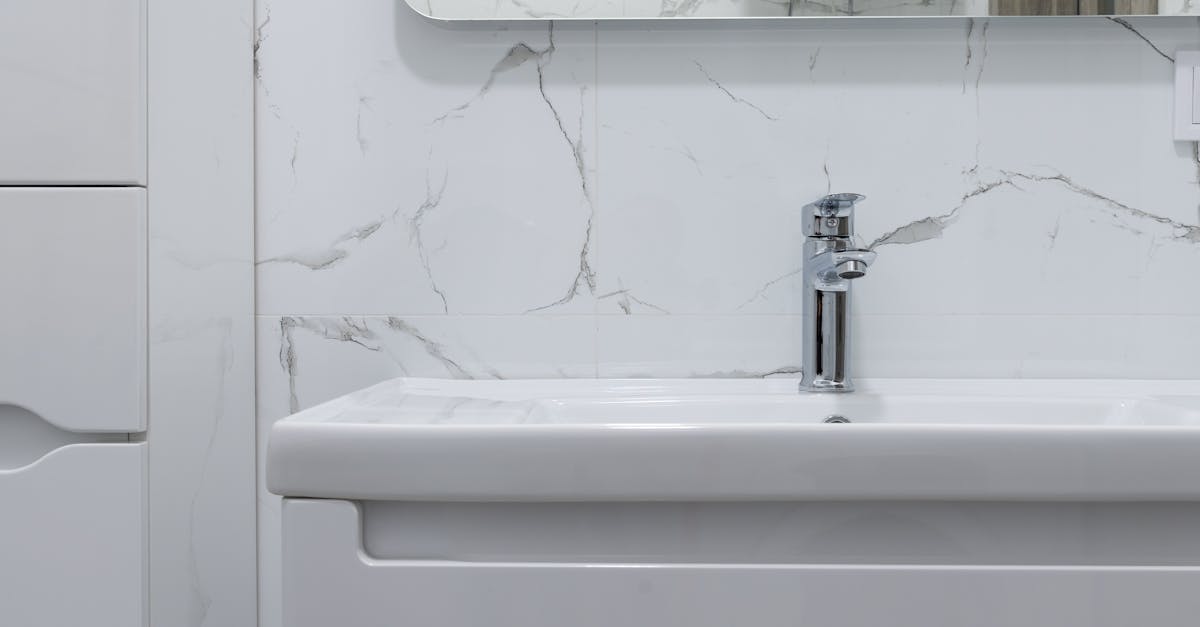
Table Of Contents
Flushing the temperature and pressure relief valve
Flushing the temperature and pressure relief valve is a crucial aspect of Hot Water System Maintenance. This process involves releasing the valve to remove any sediment or mineral buildup that may impact the valve's functionality. Over time, debris can accumulate within the valve, causing it to malfunction or not operate efficiently. By regularly flushing the valve, you can ensure that it remains clear and able to regulate the pressure and temperature within the hot water system effectively.
To flush the temperature and pressure relief valve, begin by turning off the power to the hot water heater and allowing the water inside to cool. Once the water has cooled, place a bucket underneath the valve to catch any water that may be released during the flushing process. Slowly lift the valve's lever to open it and allow water to flow out. It is important to conduct this maintenance task carefully to prevent burns or scalding from the hot water. Remember to consult the hot water heater's manual for specific instructions on how to properly flush the temperature and pressure relief valve.
Clearing any debris from the valve
Clearing any debris from the valve is a crucial aspect of Hot Water System Maintenance. Over time, mineral deposits and other debris can accumulate within the temperature and pressure relief valve, potentially hindering its proper functioning. Debris buildup might prevent the valve from opening fully when needed, which could compromise the safety and efficiency of the hot water system.
To clear any debris from the valve, begin by shutting off the power or gas supply to the hot water heater and letting the water cool down. Once safe to touch, place a bucket underneath the valve and carefully lift the lever to release a small amount of water. This flushing action can help dislodge any debris present. Remember to exercise caution when dealing with hot water systems to avoid any burns or injuries. Regularly clearing the temperature and pressure relief valve ensures that it remains free from blockages and continues to operate effectively.
Checking the sacrificial anode rod
Checking the sacrificial anode rod is an important aspect of Hot Water System Maintenance. The sacrificial anode rod plays a key role in preventing corrosion within the hot water tank. Over time, the anode rod will naturally corrode as it acts as a sacrificial element, protecting the inner lining of the tank. Therefore, it is crucial to inspect the condition of the anode rod regularly to ensure it's functioning effectively.
To check the sacrificial anode rod, firstly, turn off the power supply to the hot water heater. Next, locate the anode rod's access point on the top of the water heater. Using a suitable wrench, carefully loosen the hex head of the anode rod. Once removed, visually inspect the rod for signs of heavy corrosion or deterioration. If a significant portion of the rod is corroded, it may be time to replace it to maintain the optimal performance of your hot water system.
Inspecting and replacing the anode rod if necessary
Inspecting and replacing the anode rod if necessary is a critical aspect of Hot Water System Maintenance. The sacrificial anode rod is designed to attract corrosive elements in the water, protecting the tank from rust and extending the lifespan of the water heater. Regularly checking this component is essential to ensure the efficient operation of your hot water system and to prevent costly repairs in the future.
If upon inspection, the anode rod shows signs of significant wear or corrosion, it is imperative to replace it promptly. Neglecting a deteriorated anode rod can lead to the tank being vulnerable to rust and ultimately result in the failure of the hot water system. By adhering to a routine maintenance schedule that includes inspecting and replacing the anode rod when needed, you can maintain the performance and longevity of your hot water heater.
Inspecting the gas burner or heating elements
Inspecting the gas burner or heating elements is a crucial aspect of Hot Water System Maintenance. Regular checks are necessary to ensure the efficient operation of your hot water system. Begin by examining the gas burner or heating elements for any signs of wear, corrosion, or soot buildup. These issues can affect the performance of the system and lead to increased energy consumption.
Additionally, closely observe the connections of the gas burner or heating elements to the hot water system. Any loose fittings or leaks can result in inefficiencies and potential safety hazards. It is recommended to consult a qualified professional if you notice any irregularities during your inspection to prevent further damage and ensure the longevity of your hot water system.
Cleaning or replacing components for optimal performance
To ensure optimal performance of your hot water system, it is crucial to regularly clean or replace its components. Over time, sediment and minerals can build up within the tank or on heating elements, affecting the efficiency of the system. By conducting routine maintenance on these components, you can prolong the lifespan of your hot water heater and maintain consistent water temperature.
Cleaning or replacing components such as heating elements, burners, or filters can also improve the energy efficiency of your hot water system. Efficient operation not only saves you money on energy bills but also reduces wear and tear on the system, potentially decreasing the need for costly repairs or replacements in the future. Hot water system maintenance is a proactive approach to ensuring your system runs smoothly and reliably for years to come.
FAQS
Why is it important to flush the temperature and pressure relief valve on a hot water heater?
Flushing the temperature and pressure relief valve helps ensure it functions properly and prevents potential issues like leaks or malfunctions.
How often should I clear any debris from the temperature and pressure relief valve on my hot water heater?
It is recommended to check and clear any debris from the valve at least once a year to maintain its effectiveness.
What is the sacrificial anode rod in a hot water heater and why should it be checked?
The sacrificial anode rod is a crucial component that protects the tank from corrosion. It should be checked periodically to ensure it is in good condition.
When should the sacrificial anode rod in a hot water heater be replaced?
The sacrificial anode rod should be inspected regularly, and if it is significantly corroded or worn out, it should be replaced to maintain the efficiency and longevity of the hot water heater.
How can I ensure the gas burner or heating elements in my hot water heater are functioning optimally?
Regularly inspecting the gas burner or heating elements and cleaning or replacing any components as needed will help ensure the hot water heater operates efficiently and effectively.





























